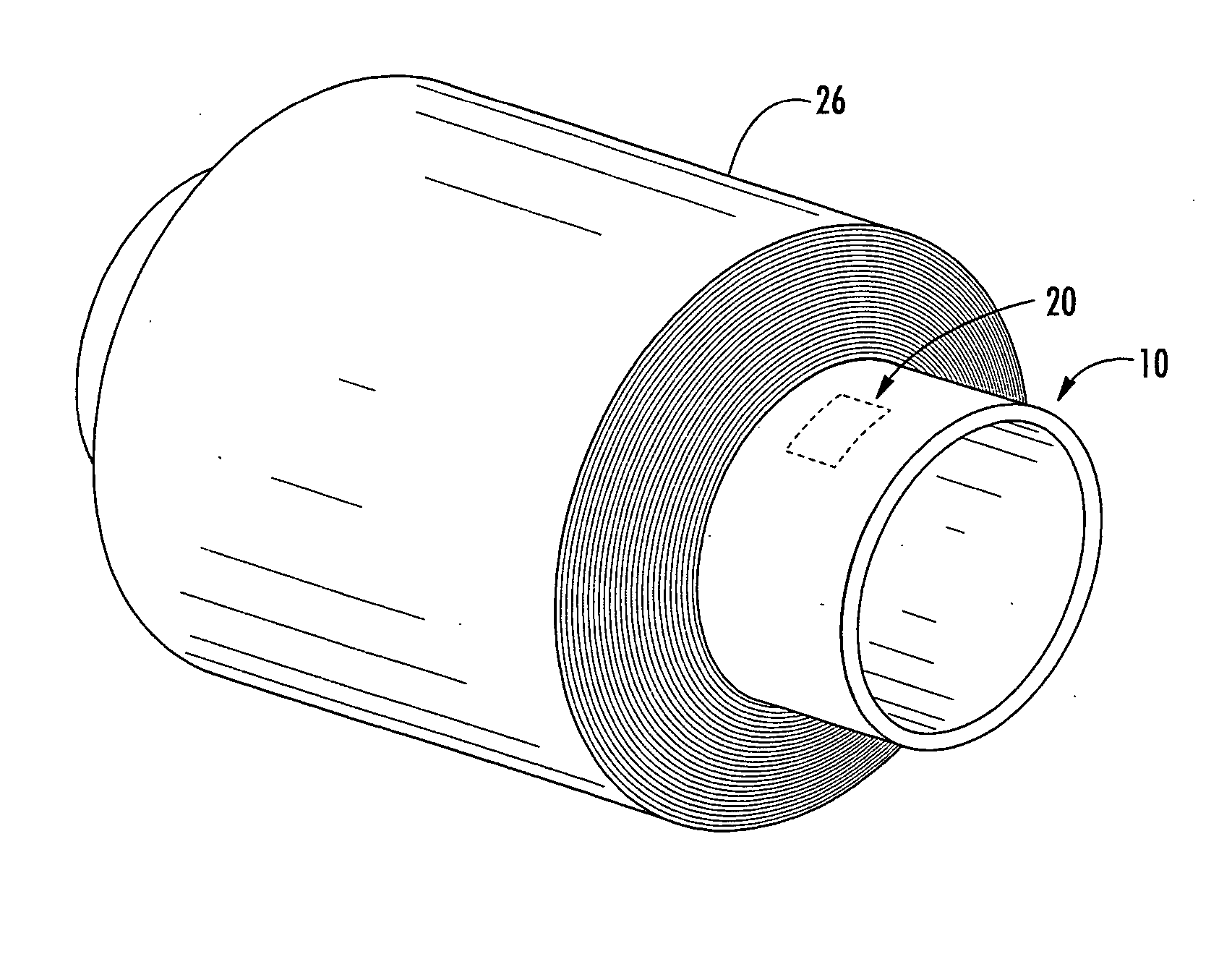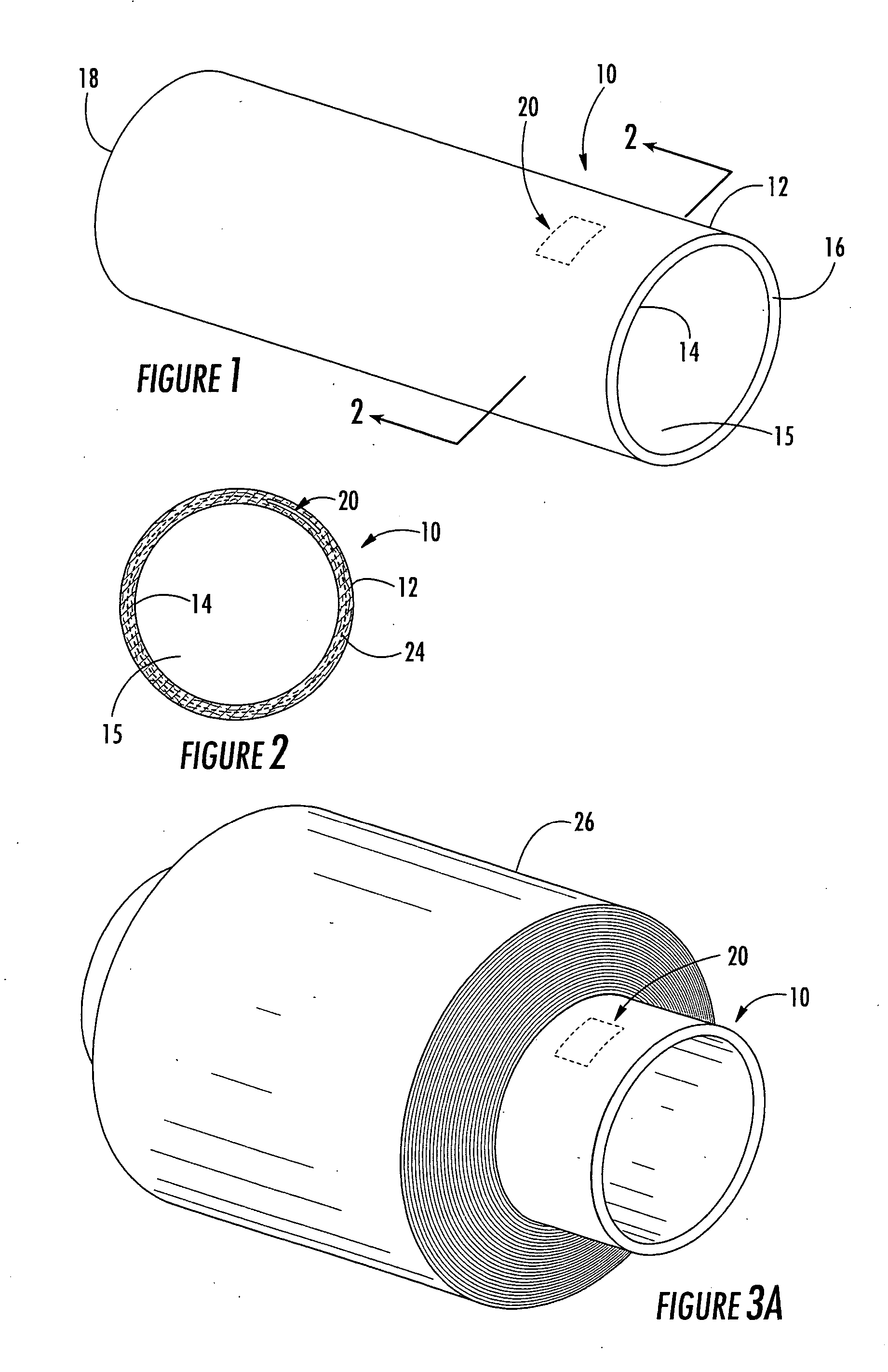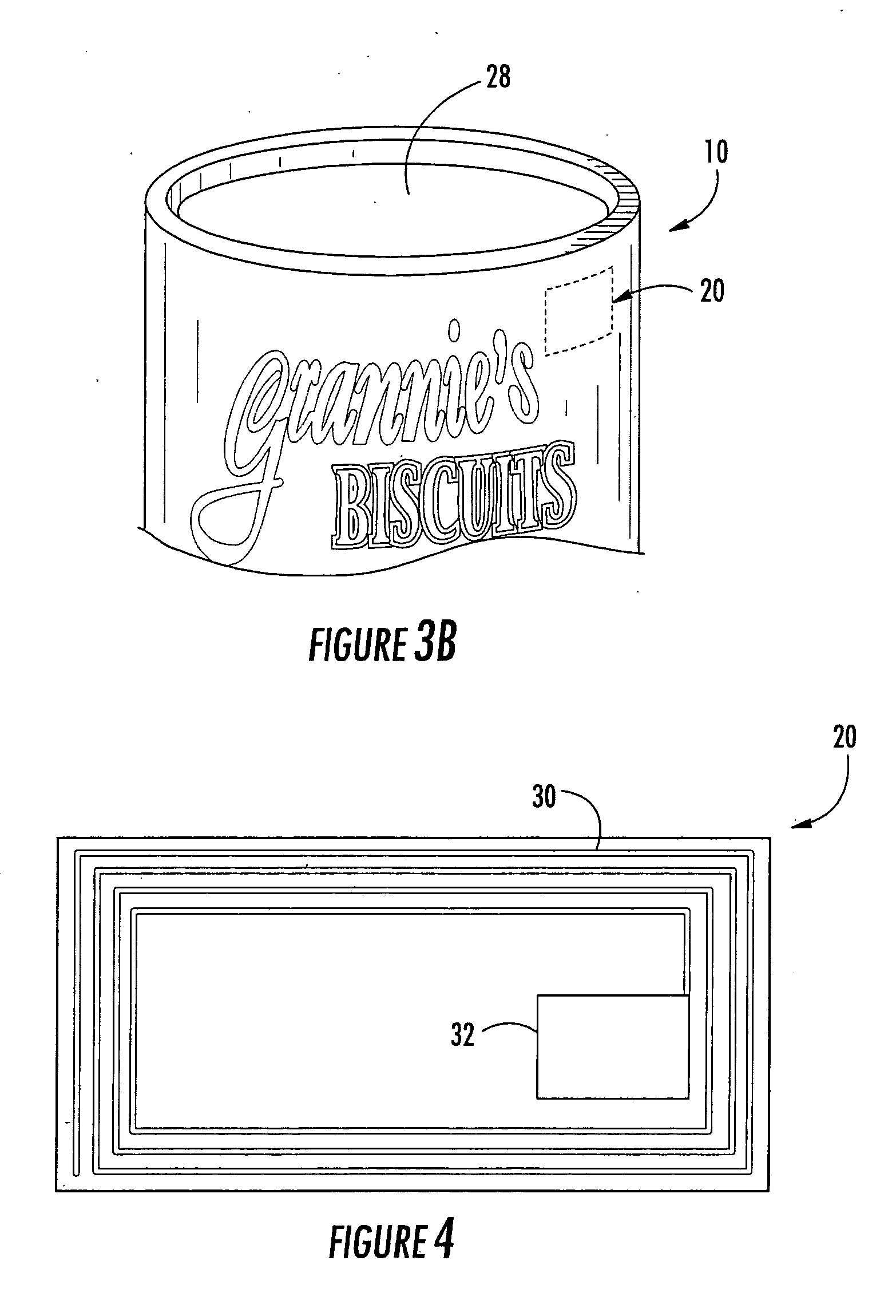Identification device for multilayer tubular structures
a tubular structure and identification device technology, applied in the field of smart packaging systems and methods, can solve the problems of limited read-only system, incompatibility of 1d and 2d bar code systems, and limited distance at which strip can be read, so as to achieve the effect of less likely to be seen and possibly removed
- Summary
- Abstract
- Description
- Claims
- Application Information
AI Technical Summary
Benefits of technology
Problems solved by technology
Method used
Image
Examples
Embodiment Construction
[0025] The present inventions now will be described more fully hereinafter with reference to the accompanying drawings, in which some, but not all embodiments of the invention are shown. Indeed, these inventions may be embodied in many different forms and should not be construed as limited to the embodiments set forth herein; rather, these embodiments are provided so that this disclosure will satisfy applicable legal requirements. Like numbers refer to like elements throughout.
[0026] Turning to the figures, FIGS. 1 and 2 illustrate a multilayer tubular structure according to the present invention. In particular, reference number 10 refers to a multilayer tubular structure used for packaging products and the like, or to a winding core or tube such as is used to support roll goods, such as textiles, paper, plastic, and other materials.
[0027] The multilayer tubular structure 10 includes multiple layers or plies of one or more known flexible materials that are strong and particularly ...
PUM
 Login to View More
Login to View More Abstract
Description
Claims
Application Information
 Login to View More
Login to View More - R&D
- Intellectual Property
- Life Sciences
- Materials
- Tech Scout
- Unparalleled Data Quality
- Higher Quality Content
- 60% Fewer Hallucinations
Browse by: Latest US Patents, China's latest patents, Technical Efficacy Thesaurus, Application Domain, Technology Topic, Popular Technical Reports.
© 2025 PatSnap. All rights reserved.Legal|Privacy policy|Modern Slavery Act Transparency Statement|Sitemap|About US| Contact US: help@patsnap.com



